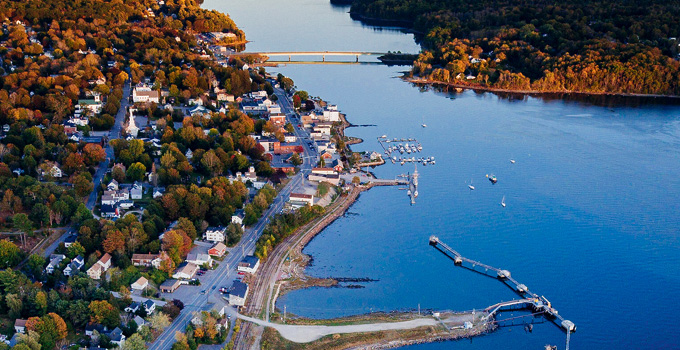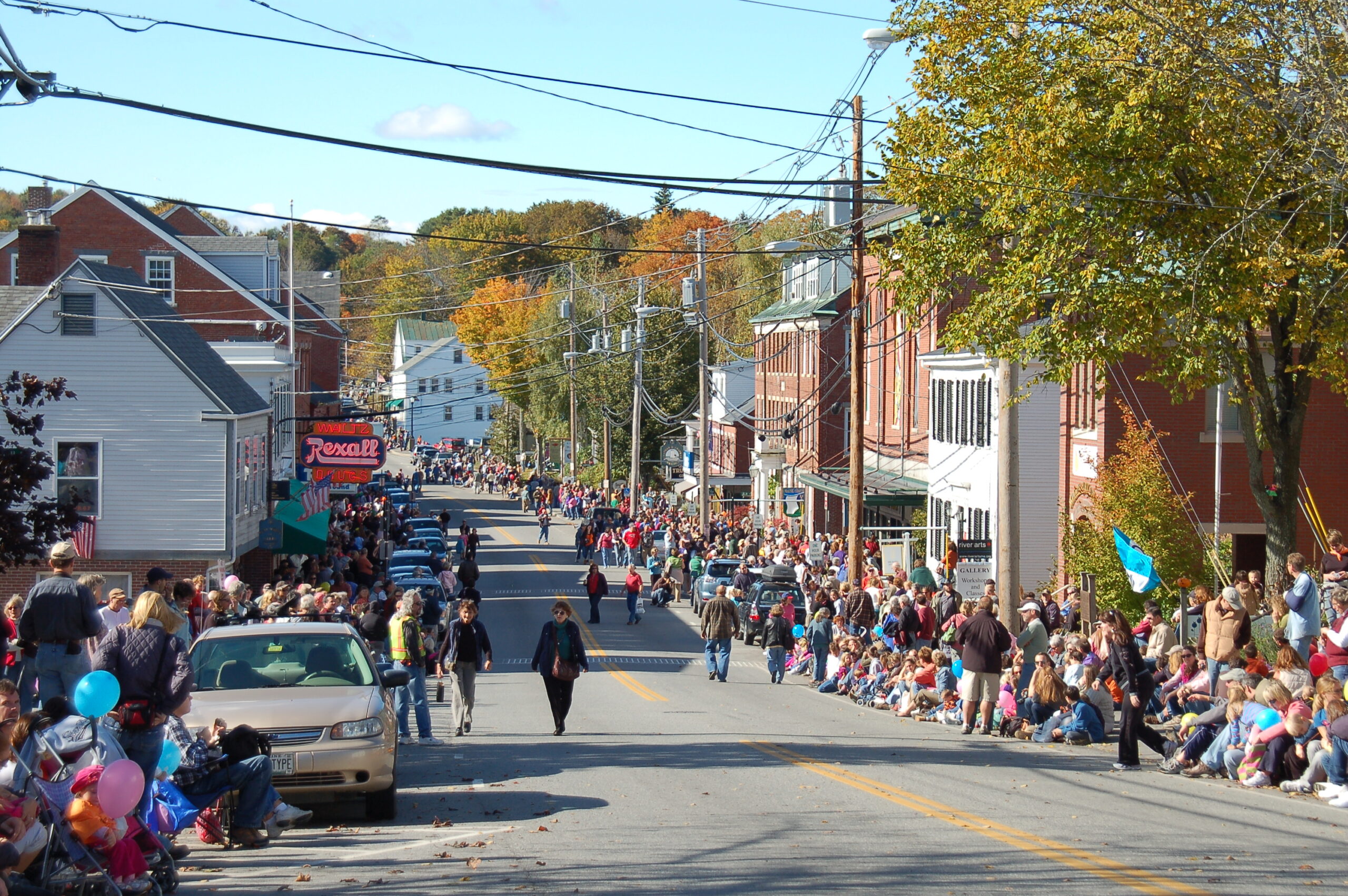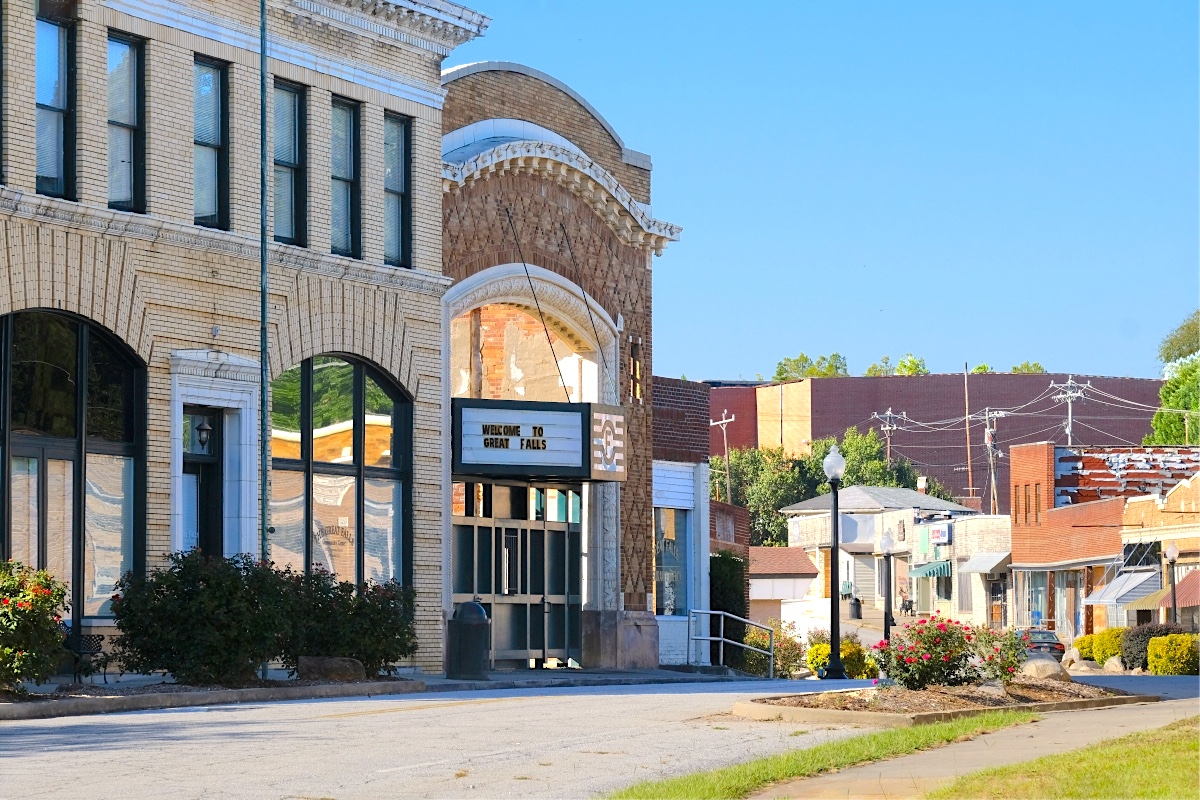Bucksport, Maine | The Town That Refused to Die

Bucksport, Maine | The Town That Refused to Die
This article first appeared in Yankee Magazine, November 2018.
When the paper mill that had defined Bucksport, Maine, for eight decades shut down just before Christmas 2014, the town, like others before it, could have withered away. Instead, something else happened.
The Last Shift
You learn what you’re made of not when life is good, but when the ground beneath your feet gives way, and you are left afraid and uncertain of what to do. In the past year, I have found the same may be said about a town.
The one I am talking about is Bucksport, Maine. About 4,900 people live here, in modest, well-kept homes set back from the east bank of the Penobscot River where it spills into the deepwater bay. Important things have always been made here. Before the turn of the 20th century, shipbuilders lived along the river, and when Robert E. Peary set out for the North Pole, he sailed on the Roosevelt, built on neighboring Verona Island, with a Bucksport mariner as chief engineer.
At the northern edge of town, on a spit of land known as Salmon Point, a paper mill was built in 1930 where a tannery once stood. The site earned its name from the spawning runs that once churned the river thick with fish. Even with the Depression settling upon the country, Bucksport had resources needed to make paper: water, forests, and the newly constructed Wyman hydro dam in Moscow to power the immense machinery that transformed pulp into paper. There was a port for ships to bring supplies in and take tons of paper out. And there were people hungry for work.
The men and women who lived in Bucksport and the rural hamlets that rimmed the town came from rugged stock: They were loggers, farmers, fishermen. Their families were large and self-sufficient, and they put meat on the table by knowing how to shoot game and how to fish on the lakes and ponds that rippled through the countryside. They would work themselves to exhaustion if asked—and they were.
Over the decades Bucksport became known for producing the finest lightweight coated paper in the world, paper that was used in such magazines as Time and Sports Illustrated and Good Housekeeping and Newsweek and catalogs like L.L. Bean and Sears and Victoria’s Secret and Avon. The boast was that any American who read magazines touched paper that came from the skill of Bucksport papermakers.
Hundreds of thousands of people pass by Bucksport every summer, on their way to Bar Harbor or Acadia National Park or the Blue Hill peninsula. They view the town from two tourist sites across the river: 19th-century Fort Knox, the largest fort in New England, and the Penobscot Narrows Bridge, which has the tallest bridge observatory tower in the world. They ride the tower’s elevator up 42 stories, and from that height Bucksport appears as a miniature village against the dark water, the smokestacks of the mill stabbing the sky. Crossing the river, they reach the town’s lone stoplight. A right turn leads to Down East tourist towns; left, to Bucksport. Few turn left. It was a point of pride for many residents that they did not scrub sidewalks for summer visitors. In Bucksport there is neither high season nor low season. There is football and hunting season, snowmobiling season, fishing season, summer-camp-by-a-pond season. It was always papermaking season.
Continue reading the full story here on Newengland.com: Bucksport, Maine | The Town That Refused to Die
Photo credit: Gabe Souza




